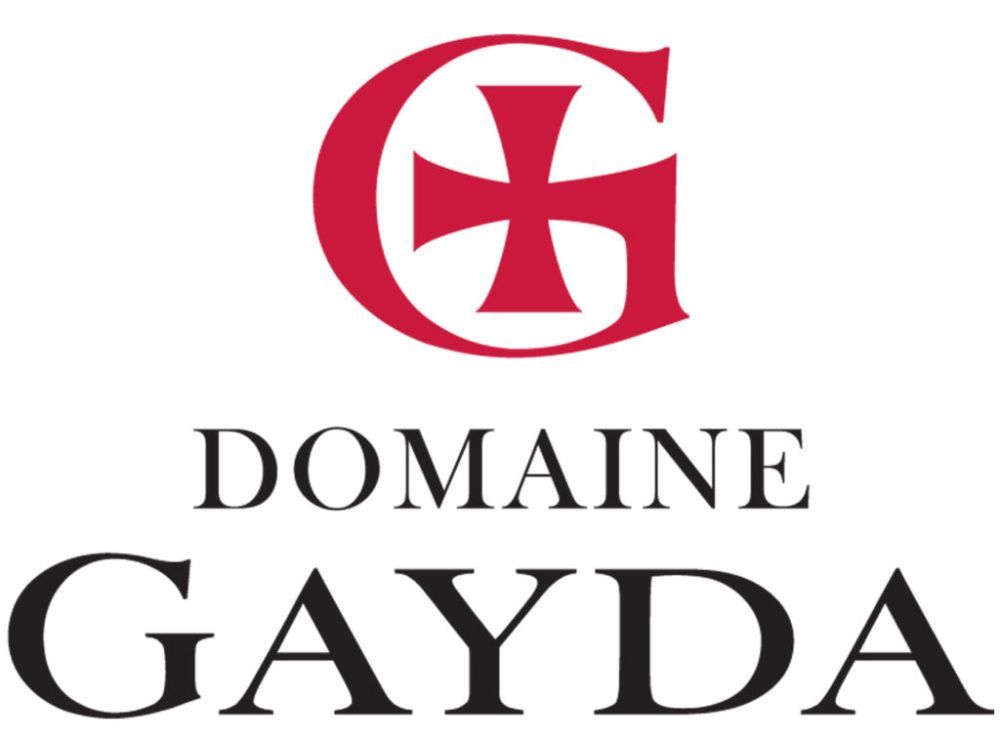Twenty or 30 years ago if you asked for an ice bucket when ordering a St Nicolas de Bourgueil you’d get a nod of approval from the sommelier that implied “he knows what he’s doing”, now it raises few eyebrows if you ask for any red to be chilled… within reason of course. Pinot Noir works well but let’s not put La Tâche on ice just yet.
It's summer, Europe bakes and every feature editor has commissioned a feature on chilled red wine – as ubiquitous as features about ‘What wines go with chocolate?’ at Easter and ‘What wines to serve guests?’ at Christmas. Chilled red wine is the new ‘BBQ red wines’ feature.
Chilled red wine is having its moment in the sun all right. It’s gone mainstream – no longer the preserve of natural wine bars and Parisienne bistros – adding a light, fruity red into the rosé ice bucket at lunchtime has become de rigeur.
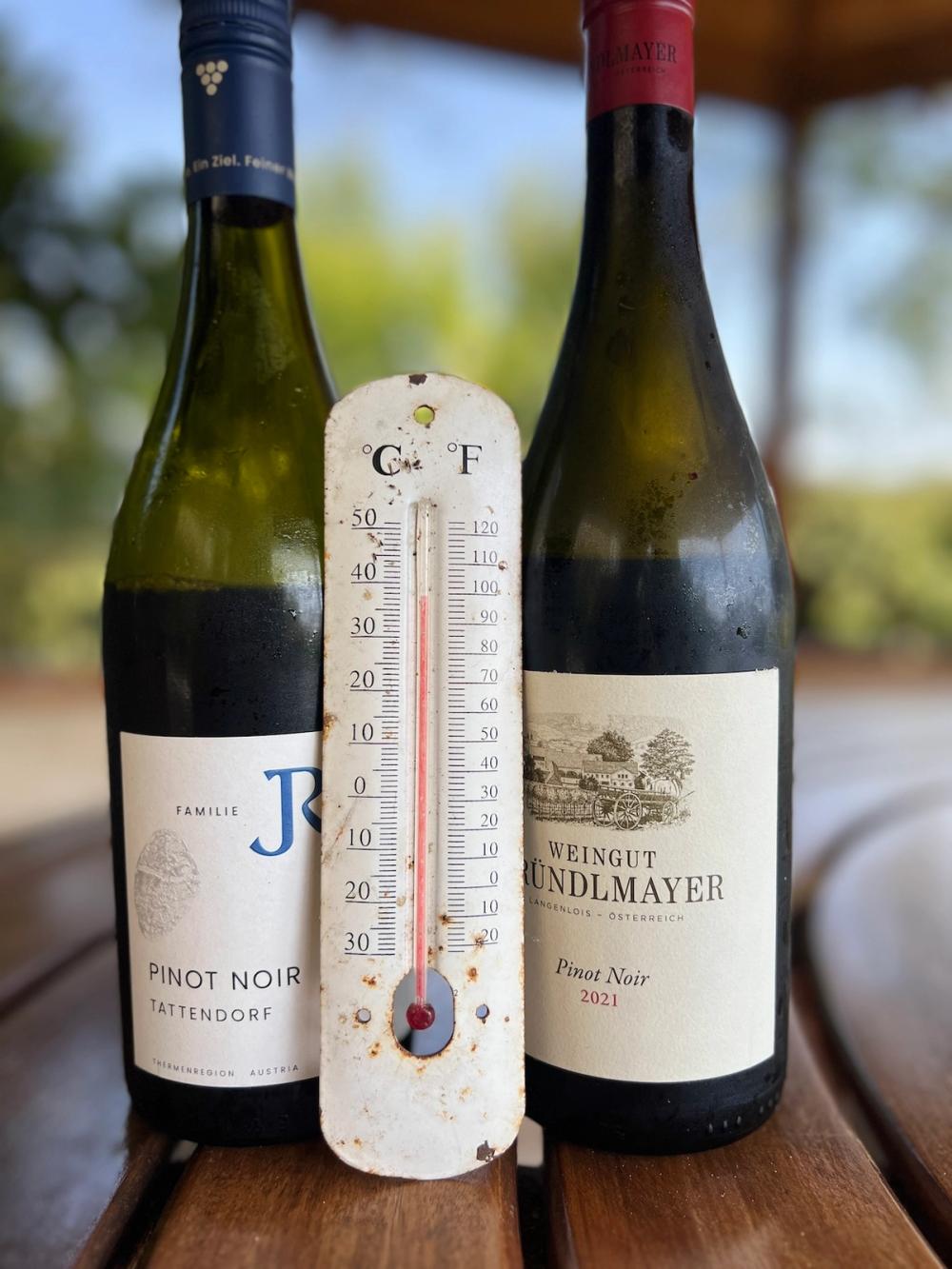
Hold the Malbec!
So why has chilled red become such a thing?
After all it’s not like the Romans and Greeks didn’t know a thing or two when they stored wine in amphorae in the cold ground, nor Franciscan monks with their labyrinthine cellars. The rosé boom might be an influence here but more likely it’s because chilled red wine is fun, easy and less a thing to savour – it’s more casual, less serious, more likely to be served after a steam beer and snacks rather than in fine dining.
We’re in an era where rules are made to be broken – the rise of the natural wine movement, orange wines and pét nat have all helped winemakers and drinkers to experiment more. Modern food pairing and the ‘small plate scene’ have also ushered in greater laissez faire. And don’t forget everything is literally getting warmer – the ‘room temperature’ that reds are supposed to be served at is no longer 16-18°C and al fresco dining can often be in the 30°C range and more. You’re not going to order a highly extracted Shiraz are you now.
Winemaking styles have changed. Intensely dark, powerful red wines with a high alcohol content may have been all the rage in the 1990s and 2000s, but today’s trend leans towards lively, delicate wines displaying varietal typicity. This is important when you consider that the chilled reds that work best are young, unoaked, paler wines with soft, mellow and integrated tannins – otherwise chilling them dials up the tannins and makes the experience like drinking cold tea.
Winemaking techniques have also changed. On the one hand winemakers still make red wines in the classical style where wines have more concentration and complexity, aged no doubt in wooden barrels for the colder winter months. But then there are the lighter, easier reds for hot summer months – these are enabled by grapes being picked earlier, more gentle extraction and winemakers choosing grape varieties that deliver paler, lighter wines that are lower in alcohol, that don’t need (expensive) wooden barrels for ageing and can be drunk earlier – always good for cash flow.
The tannin factor is key. Consider a warm white wine – it tastes muted, flat and lacks definition, but when chilled the bouquet becomes brighter and the acidity more tense. It’s the same with red wines that have less tannin (like most white wines) – they instantly become naturally bright and juicy, come into focus more and feel somehow alert.
With very tannic reds, chilling doesn’t work as well and you bring into play bitterness and a stemmy, dry sensation on the finish.
So, chilling a wine will make it more refreshing, more vibrant, bring more lifted aromatics and fruitier flavours into play, it can make the alcohol seem lower and the acidity higher than it is.
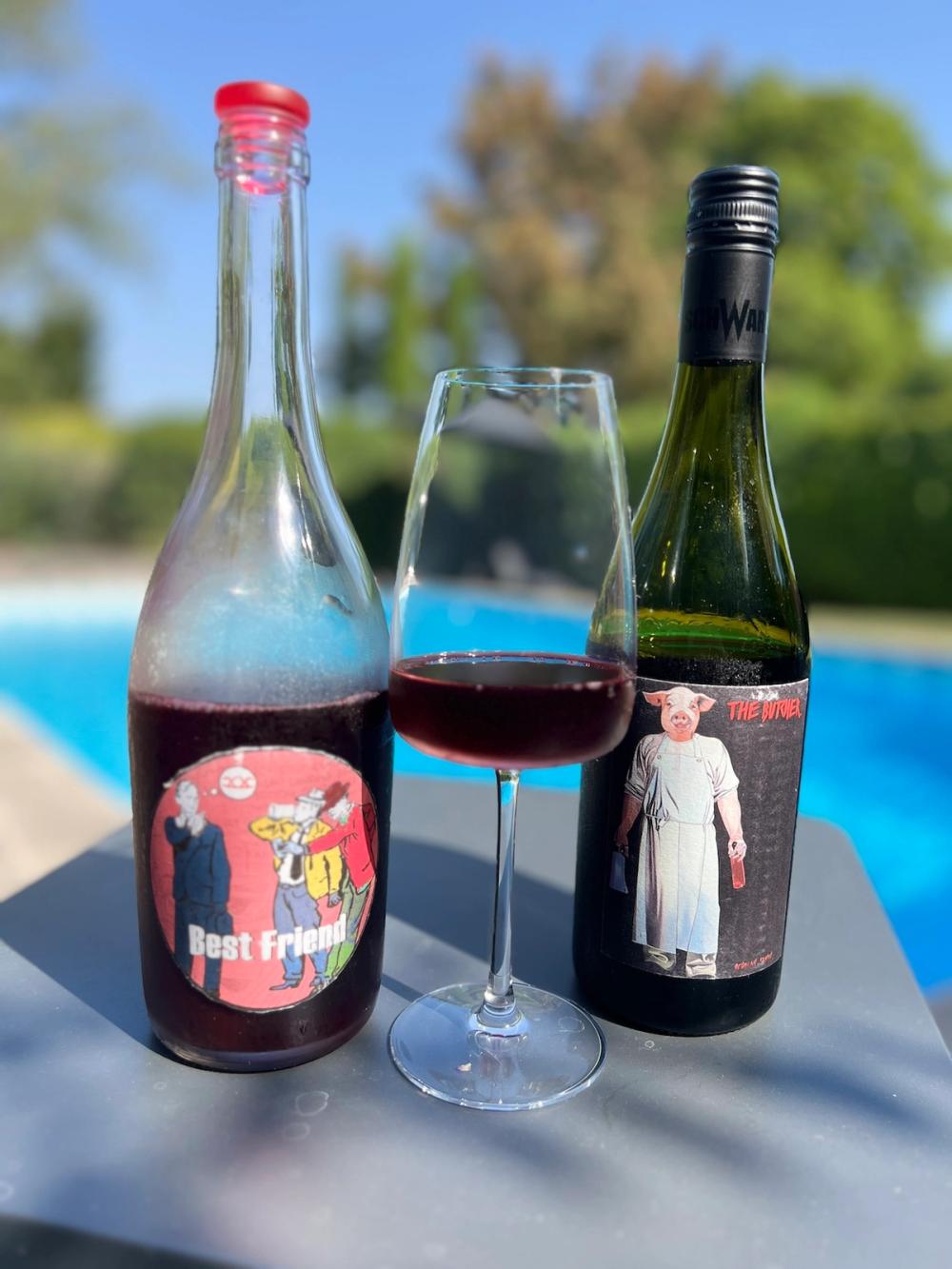
Chilling Austrian reds plays into the hands of the country's young generation of winemakers who are happy to break the rules
For grape varieties that work well then think lighter, unoaked reds such as Pinot Noir, Cabernet Franc, Blaufränkisch, Zweigelt and Gamay which are delicious at 13°C or 14°C – having had 15 minutes in the fridge or an ice bucket. Personally, I serve all my reds year-round at a fresh cellar temperature of 11°C and, if too cold, it doesn’t take long to warm up. If you serve below that temperature you can experience stifled aromatics with those lovely fruit flavours put to sleep.
Pairing-wise with chilled reds think apero nibbles, salads, grilled vegetables, fish, light pasta dishes and, in the case of wines where you actually do want to emphasise the tannin, cheese.
So, all of the above very much plays into the hands of Austrian winemakers who have historically been making fresh, fruity and structured wines – lighter wines that are particularly well-suited to chilling.
Indigenous Austrian grape varieties such as Zweigelt, Blaufränkisch and St. Laurent are renowned for their fruit and freshness and chill well, as does Austrian Pinot Noir which is much more affordable than Pinot that comes from other wine regions and doesn’t have that ‘earthy’ note that you get when red Burgundies are too cold.
Putting chilled Austrian wines to the taste test
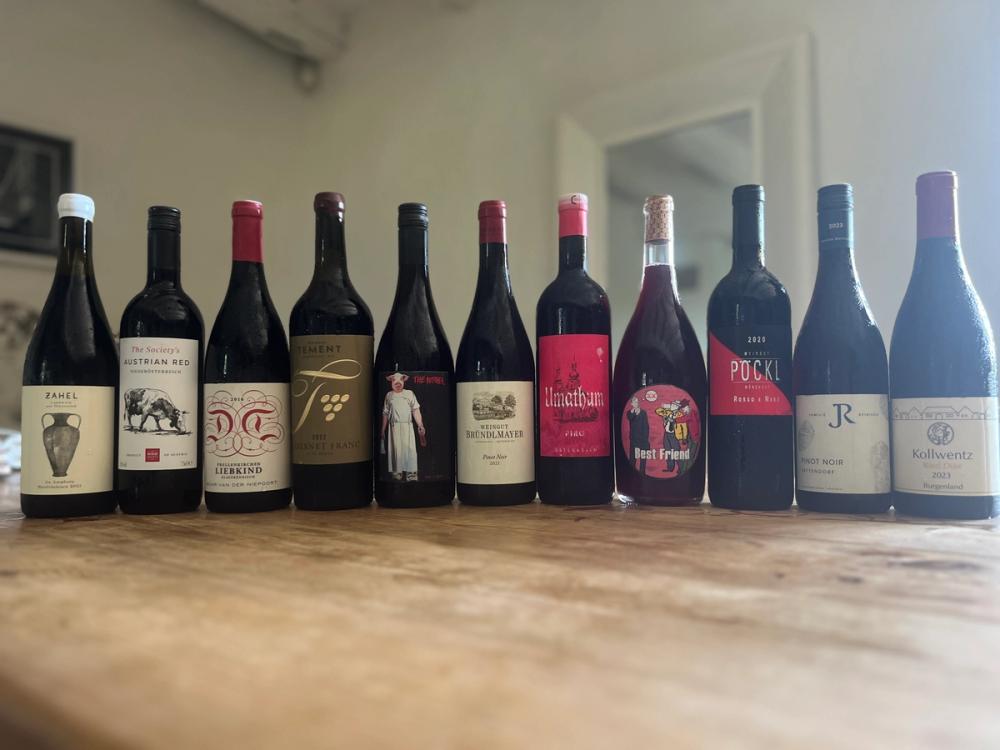
Austrian Wine set me a challenge – see which reds work well chilled. I chose a selection of wineries covering as many of the wine regions as possible and then each would send me a red which they thought chilled well. So 11 wines in all, the tasting began al fresco in mid-30s °C.

First off, three Blaufränkisch – from a grape that has vibrant acidity, medium tannins and bags of fruit – think ripe cherries and red and black berries. There’s also a spicy, peppery note that works well when chilled especially with barbecues and Ottolenghi-style cuisine. Gently chilled the wines seem to have greater elegance while not losing any complexity
Best Friend 2024, Pittnauer, 11.5%
The explosion of on-trend winemaking is very much in evidence in this excellent young, fresh quaffer that is built for Gen Z to have fun with in the sun. Strawberries and spices on the nose, pomegranate crunch in the mouth where the wine initially has a slight spritz; tannins are mellow, alcohol is low and the 2.7 g/l residual sugar combines nicely with the wood ageing (500 l) to give the wine plumpness in the mid-palate. Feels like it was made to be chilled and is perfect without food. From Neusiedlersee in Burgenland this is the ultimate glou glou wine. UK importer: Clark Foyster Wines
An Amphora Blaufränkisch 2021, Zahel, 13%
Chilled reds have always fared well in natural wine bars so no surprise that this amphora-aged natural wine slips down a treat when chilled. The lifted aromatics are complex with bright fruits of the forest and more earthy, mushroom notes. Fresh, with soft-textured, pumice stone-like tannins and a lick of parma violets on the tongue. Gamay-like, this hails from a single vineyard in the South-East of Vienna. Chilled, try this with a dark chocolate ganache. UK importer: 3rd Floor Wines
Prellenkirchen Liebkind Blaufränkisch 2016, Muhr-Van Der Niepoort, 13%
Blaufränkish queen Dorli Muhr likes to hold back this wine some five or six years because she feels it takes that long for the finesse and elegance to show itself beyond the considerable tannins the small berries contribute from this highest-elevation vineyard on the Spitzerberg. The wine is only racked once in 20 months ageing in large wooden casks and bottled without filtration. The age was noticeable on the eye and in the secondary notes, blueberries were dominant on the attractive nose, with juicy, lively fruit. Lovely balance, breadth, full on fruity, with a nice off-dry cherry finish. Delicious chilled. From Carnuntum, Niederösterreich. UK importer: tbc
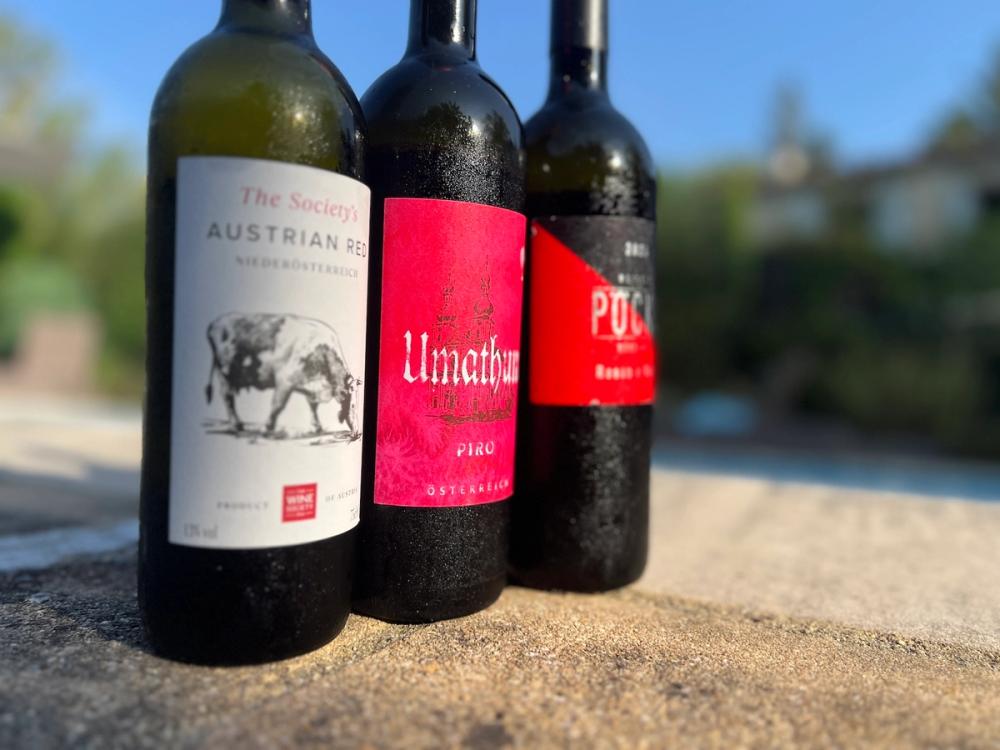
Wines from Zweigelt, Austria’s most widely planted grape, are no-nonsense fruit bombs – light, soft tannins, high acidity all giving the wines a youthful freshness. They also work very well chilled and pair well with a wide variety of summer foods such as cold cuts, cheeses and chargrilled vegetables.
The Society’s Austrian Red 2023, Familie Mantler KG for The Wine Society, 13%
For the second year in a row this crowd-pleaser was victorious in the Wine Society’s 2025 Wine Champions blind tastings – noted for its great value (£9.50 RRP). From its bright vermillion to its vibrant, fruit-filled palate this had Beaujolais written all over it. Ripe blue plums, morello cherries and tea notes work well with an earthy, spice note that has a touch of tutti-frutti on the finish. Made by Familie Mantler KG in Weinvertel which is Austria’s answer to the Languedoc in Niederösterreich. UK importer: The Wine Society
Zweigelt is a cross between Blaufränkisch and St Laurent, the latter also coming into its own when chilled with lovely velvety tannins, fine berries and herbal notes. There were none in my tasting pack sadly but these wines make an interesting substitute for a rosé. Worth experimenting.
Before tackling the Pinot Noir there were two blended wines
Piro 2022, Umathum, 11.5%
Umathum should need no introduction to lovers of Austrian wines but this blend of six resistant varieties (PIWIs) might need one as it is only available in two countries (and direct customers), the UK being one. A mix of dry red wine, rosé and 1% sweet wine, this is very dark purple, herbal with fruits of the forest on the nose and blueberries on the palate. Worked well chilled and would be a natural as a bistro house red – rustic, smoky with a gravelly texture. From Neusiedlersee in Burgenland. UK importer: Clark Foyster Wines
Rosso e Nero 2020, Pöckl 13.5%
Also from Neusiedlersee in Burgenland, this is a blend of Blaufränkisch, Zweigelt, Merlot and Cabernet Sauvignon from another esteemed winemaking family. Very dark with black fruits and tobacco on the nose, beautifully complex, rich, fresh and structured with a green leaf finish. I personally preferred this wine at ‘room temperature’ there is a tight structure here and firm, unyielding tannins which were dialled up when chilled. Perhaps more bottle age? UK importer: Gardabani

It's not just indigenous Austrian varieties that work well chilled in summer. International varieties too such as Pinot Noir (of course!) whose finessed fruit and elegance is enhanced by a bit of chilling.
Pinot Noir Tattendorf 2023, Familie Reinisch, 13%
An easy drinking mineral style of Pinot which (in the €10-20 mark) shows off the incredible value for money you can get with Austrian Pinot and won’t put you off putting a few in an ice bucket at a casual summer supper. Raspberries on the nose give way to delicate floral notes as the wine warms up in the glass. Refreshing, fresh with fine tannins and a lick of green leaf on the finish. From Thermenregion in Niederösterreich. UK importer: Astrum Wine Cellars.
The Butcher Pinot Noir 2023, Schwarz, 13%
A more full-bodied style that seemed to increase intensity as it got warmer. I found black raspberry and mulberry on the nose. More intense than the Reinisch, more structured, more tannic; sour cherry notes, cherry Chewit, cranberry with a chewy grip on the finish. No surprise that this would pair beautifully with BBQ meats! In fact I’m not sure I’ve seen a more ‘aggressive’ Pinot label! From Neusiedlersee in Burgenland and also less than €15 RRP. Seeking UK distribution.
Ried Dürr Pinot Noir 2023, Kollwentz 13%
No surprise that this is up in the €50 bracket as there is a refined beauty and elegance in this wine. Aluring aromas of red berries and sweet nougat; in the mouth the wine is medium-bodied, lithe, with cherries and minerals; the tannins are well-integrated with a lick of tart fruit on the finish. Chilled, the wine’s purity was enhanced with a lovely fruity freshness. A gastronomic wine that I would serve with tomato carpaccio and burrata. From Leithaberg in Burgenland. UK importers SOMA Wines; Lea & Sandeman
Pinot Noir 2021, Bründlmayer, 12.5%
A Burgundian-style Pinot from an Austrian household name. This has had 18 months in 2-3 year old 300l Austrian and French oak and it shows in complexity, structure and the hint of oak on the spicy finish. The wine opens with ripe fruits of the forest, has an abundance of yummy fruit on the palate, the silky tannins and well-integrated acidity lending an elegance and purity. This is a fine wine alright and interesting how it works splendidly chilled. From the Kamptal in Niederösterreich, this drinks well on its own or paired with roast or braised meats and fresh cheese. UK importer: Bancroft Wines
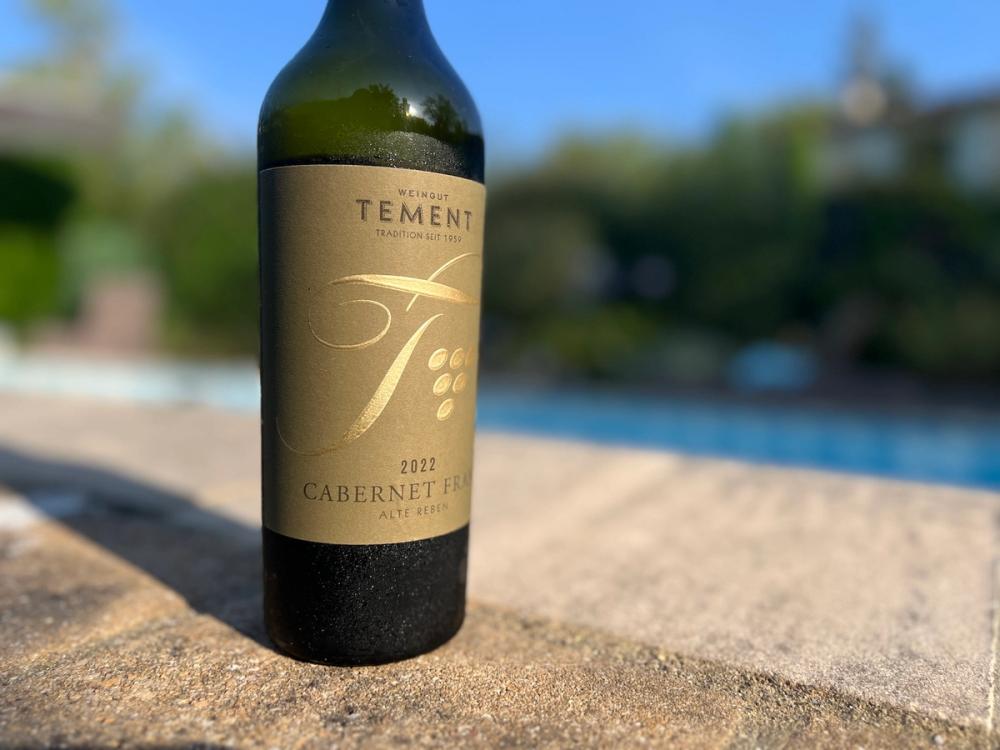
Cabernet Franc Alte Reben 2022, Weingut Tement, 12.5%
Cabernet Franc is rapidly being planted worldwide as it’s a grape that brings freshness to a blend, so it was interesting to taste an Austrian 100% Cab Franc chilled. It’s a premium wine with some power but when chilled its thirst-quenching qualities were emphasised. Ruby red, on the nose you find cherries, cranberries, sweet tobacco and black pepper; the palate was medium-to-full bodied, intense but fresh with it thanks to the backbone of acidity and fine-grained tannins. From a highly respected family winery, farming 85 hectares of Demeter-certified land in Südsteiermark in Steiermark which is on the Slovenian border. Try pairing it with a beef tartare. UK importer: tbc
Austrian Wine is a commercial partner of The Buyer. To discover more about them click here.
















